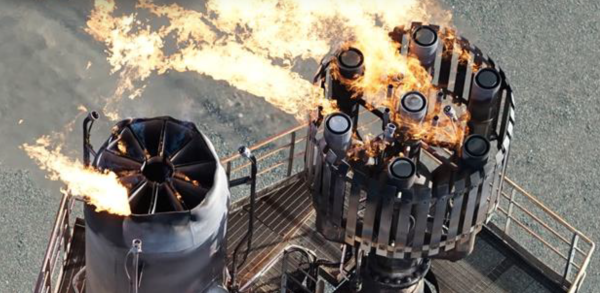We’ve written earlier than about methods to earn money utilizing aerial thermography, and naturally we coated our personal Intro to Aerial Thermography course and why we created it to supply expertise that may give industrial drone pilots an edge a short time again.
Today we wish to go additional, and look intently at how a few of these purposes really play out in actual life.
In these two in-depth case research from Workswell, creator of the thermography sensor Workswell WIRIS, we get an in depth look at how aerial thermography is getting used for inspections with the tip purpose of stopping accidents whereas enhancing effectivity at a serious industrial facility, and likewise how aerial thermography helps to facilitate the cultivation of various crops in agriculture.
The second utility is thoughts blowing—it entails utilizing the “thermal behavior” of crops to establish their particular classification, which makes cultivation for particular outcomes a lot, a lot simpler.
Let’s dive in.
[We just re-opened our Intro to Aerial Thermography course—learn more here.]
1.Inspections: Using Aerial Thermography to Measure Temperature Extremes for Burners at a Gas Processing Plant
Overview
Last yr CONDOR Solutions carried out an inspection of the burners in a facility known as OPF operated by an organization known as Sakhalin Energy.
The OPF facility receives and processes fuel for transport by way of pipeline to a crude oil terminal. It covers an space of greater than 62,000 sq. meters, or virtually 39 sq. miles, the ability is very large, and accommodates pumps that permit processing of as much as 195,000 barrels of oil a day.
The facility is on Sachalin Island, situated in a Russian territory north of Japan, within the Pacific Ocean.
The burners are essential to the work of the ability, and endure each day stress by being consistently subjected to extremes of warmth and chilly. The purpose of the inspection was to create particular measurements for the extremes of temperature to which the burners are uncovered, in order that the information may very well be used to create a exact upkeep and inspection schedule that may permit for issues to be detected far earlier than any potential breaking factors for the supplies used to construct the burners.
The Inspection
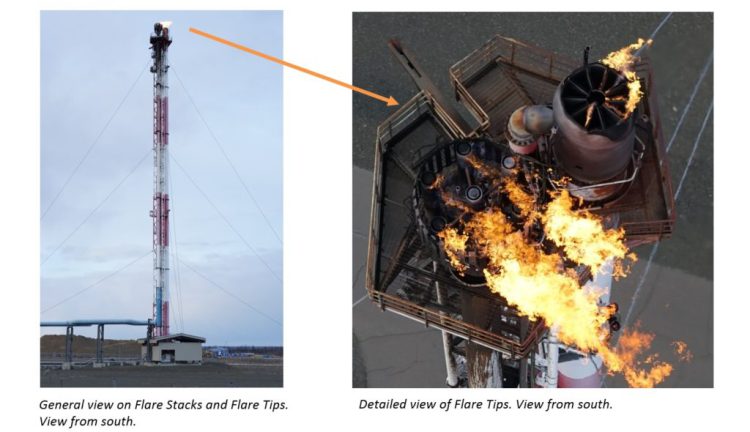
In addition to the usual digicam SONY Alpha 7R hooked up to their UAVs, CONDOR Solutions used a thermal imaging digicam, the Workswell WIRIS, to examine the burners for excessive temperatures.
The climate throughout inspection was cloudy, with the wind at 14 m/sec and a temperature of -10° Celsius, or 14° Fahrenheit.
Due to the extremes in temperature, thermal measurements had been divided into two components:
- The burners’ mast from the underside half as much as the highest service runway.
- The higher a part of the burner’s shank.
The thermal imaging digicam allowed for a measurement of temperatures as much as 1,500° Celsius, or 2,732° Fahrenheit (woah, that’s sizzling!), utilizing a excessive temperature filter.
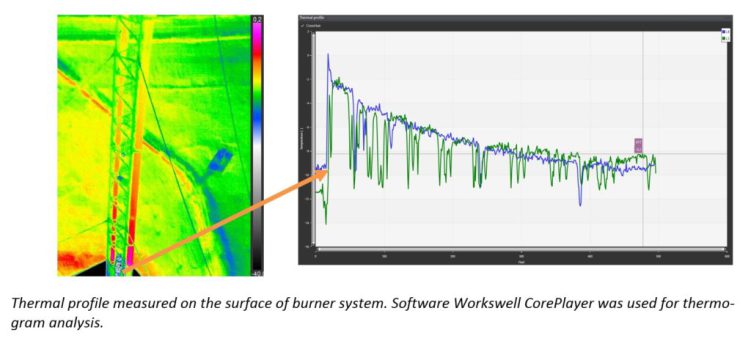
The temperature profile proven above was created as one of many closing deliverables for the inspection, utilizing knowledge gathered with the thermography sensor.
The graph and thermogram above clearly present the place the pipeline isolation finishes. At this level, the temperature sharply will increase up, and consequently the temperature step by step decreases along with the peak, as much as the higher half (i.e., the shank) of the burner, then the temperature quickly will increase up once more, to about 2,000°Celsius, or three,632° Fahrenheit.
Conclusions
Using the information gathered by the CONDOR staff, the ability managers had been capable of create an optimum schedule for upkeep and inspections to scale back breakage, in addition to enhancing manufacturing potential for the ability.
Pretty neat that the information gathered, which couldn’t be gathered every other approach, was used not solely to make issues extra environment friendly, but additionally to assist keep away from accidents and in the end hold the individuals working at this facility safer than they’d in any other case be.
2. Agriculture: Using Aerial Thermography for the Cultivation and Phenotyping of Cereals
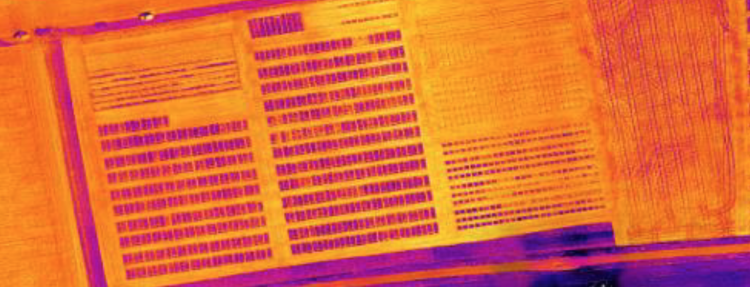
Overview
This utility is extra difficult than the inspection utility coated above, and, nicely, it’s additionally simply darn intelligent.
The purpose right here was to make use of cultivation to emphasise sure traits in a staple plant, reminiscent of wheat, and de-emphasize others, with a view to get a extra very best model of that plant for varied situations (you might think about wanting a number of varieties—these which might be hardy within the chilly, or do nicely during times of drought, and so forth, relying on the world by which you wish to develop your crop).
The means of cultivating completely different seeds with a view to create new cereal varieties is extremely time consuming, as a result of it requires manually going by way of fields of crops and in search of various kinds of traits (to not point out realizing what traits to search for within the first place) with a view to listing, after which observe, which sort of plant is rising the place on a particular plot of land.
In this case, with a view to domesticate completely different seeds, the genetic sources of minor cereals had been examined in three-year seedbeds, utilizing recognized findings associated to the collections of genetic sources. It was essential to trace the various kinds of cereals being grown, and that’s the place aerial thermography is available in.
The Application
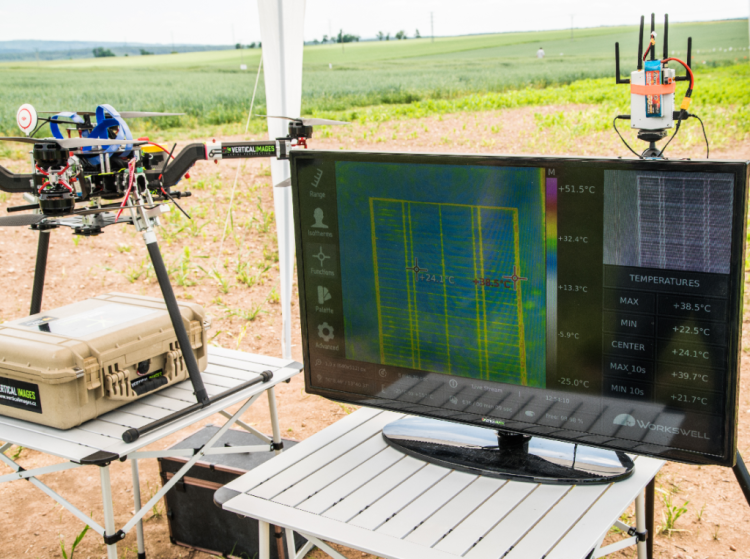
The genetic sources (i.e., the crops!) being evaluated on this occasion included winter and spring wheat, winter barley, each types of triticales (a wheat hybrid), useless varieties of Hordeae (barley), and quite a few different minor crops.
And that is the place issues get actually fascinating, as a result of it seems that thermography, enabled by UAvs, has prolonged the vary of classifiers for crops (that’s, aerial thermography has allowed for the creation of new methods to categorise and categorize crops—which is fairly unbelievable), and now permits us to categorise crops by way of their thermal habits in relation to their transpiration response.
“Transpiration response” in crops is roughly equal to sweating—crops have openings on their leaves that permit water to flee—so, in brief, crops had been recognized from the air based mostly on how warmth affected them, and the way a lot, or if, they transpired. Which is approach sooner than strolling round a area with a clipboard. 🙂
The Details
In the spring of final yr 224 genotypes of wheat and 10 genotypes of triticale had been sown.
For scanning the temperature situation of experimental varieties, a thermal imaging digicam (Workswell WIRIS) was used, supported by a UAV based mostly on Gryphon Dynamics’ frames system. The flight was pre-programmed utilizing UGCS Ground Station, and the information was processed utilizing Pix4D and analyzed by each the Workswell CorePlayer and the Workswell Thermoformat software program.
Conclusions
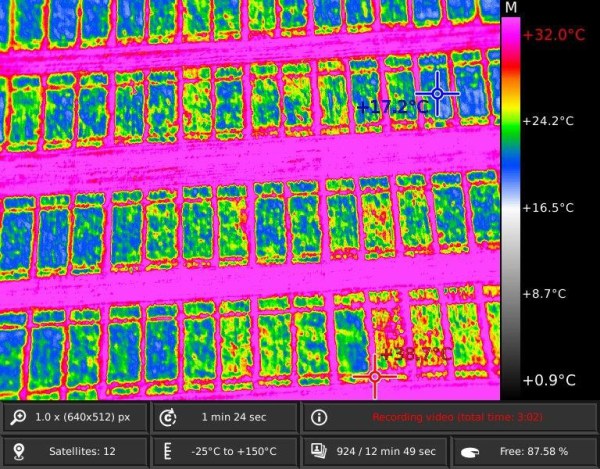
The preliminary evaluation of the information indicated that the strategy was helpful for the method of cultivation and phenotyping (i.e., figuring out completely different genetic varieties), the place the varieties have particular signs and important variations within the areas of each seen and infrared radiation.
In quick, thermography was capable of assist us view crops in an entire new approach, and this strategy wouldn’t be attainable if it wasn’t aerial—that’s, if the thermal sensor wasn’t hooked up to a UAV.
The methods by which aerial thermography could be helpful to agriculture are already many, and there are specific to be extra purposes and extra varieties of use instances for present purposes as we transfer ahead in our use of drones. And we are able to solely think about what future makes use of may be found for this new “using thermal behavior to identify plants” utility—what sorts of wheat and different crops can be cultivated extra effectively and with higher yields? How many hundreds of hours of labor will we save, and the way a lot new meals can be produced? We’re excited to search out out.

Zacc Dukowitz
Zacc Dukowitz is the Director of Marketing for UAV Coach. A author with skilled expertise in schooling expertise and digital advertising and marketing, Zacc is keen about reporting on the drone trade at a time when UAVs might help us stay higher lives. Zacc additionally holds the rank of nidan in Aikido, a Japanese martial artwork, and is a extensively printed fiction author. Zacc has an MFA from the University of Florida and a BA from St. John’s College. Follow @zaccdukowitz or try zaccdukowitz.com to learn his work.

 Unmanned Aerial Vehicle The latest drone news
Unmanned Aerial Vehicle The latest drone news
